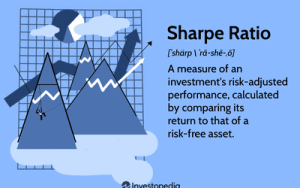The Sharpe and Treynor performance measures both calculate a portfolio’s average excess return per unit of risk. Under what circumstances would it make sense to use both measures to compare the performance of a given set of portfolios? What additional information is provided by a comparison of the rankings achieved using the two measures?
Describe how the Jensen measure of performance is calculated. Under what conditions should it give a similar set of portfolio rankings as the Sharpe and Treynor measures? Is it possible to adjust the Jensen measure so that a portfolio’s alpha value is measured relative to an empirical form of the arbitrage pricing theory rather than the capital asset pricing model? Please expound on your response.
The information ratio (IR) has been described as a benefit-cost ratio. Explain how the information ratio measures portfolio performance and whether this analogy is appropriate.
Assessing the performance of an investment portfolio can be accomplished with either returns-based measures or holdings-based measures. What are the major advantages and major disadvantages of each approach to performance measurement?

Sharpe and Treynor Performance Measures
During the annual review of Lynn U’s pension plan, several trustees questioned Sir Lance Knight, a pension consultant, about various aspects of performance measurement and risk assessment. In particular, one trustee asked about the appropriateness of using each of the following benchmarks: the Market Index, the Benchmark normal portfolio, and the Median of the Manager universe.
- Explain two different weaknesses of using each of the three benchmarks to measure the performance of a portfolio.
- Another trustee asked how to distinguish among the following performance measures: the Sharpe ratio, the Treynor measure, and Jensen’s Alpha. Describe how each of the three performance measures is calculated, AND state whether each measure assumes that the relevant risk is systematic, unsystematic, or total. Explain how each measure relates to excess return and the relevant risk.
Requirements: 4-5 pages
